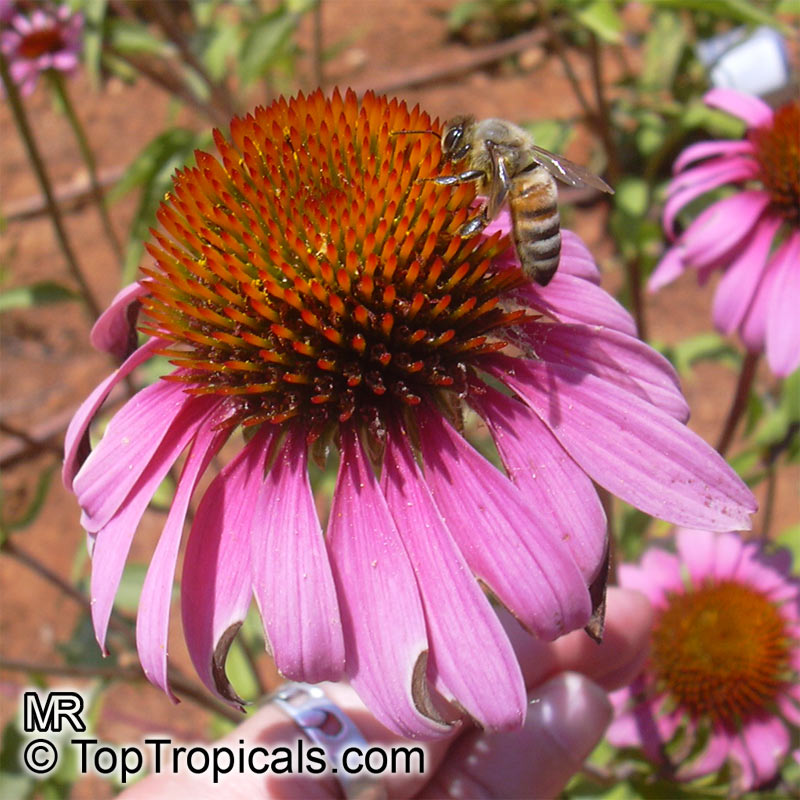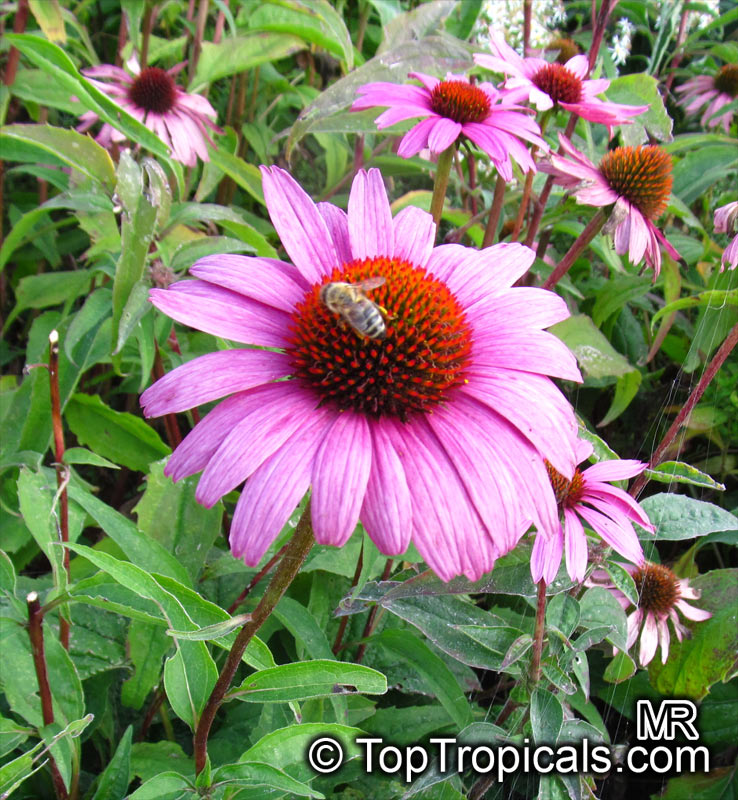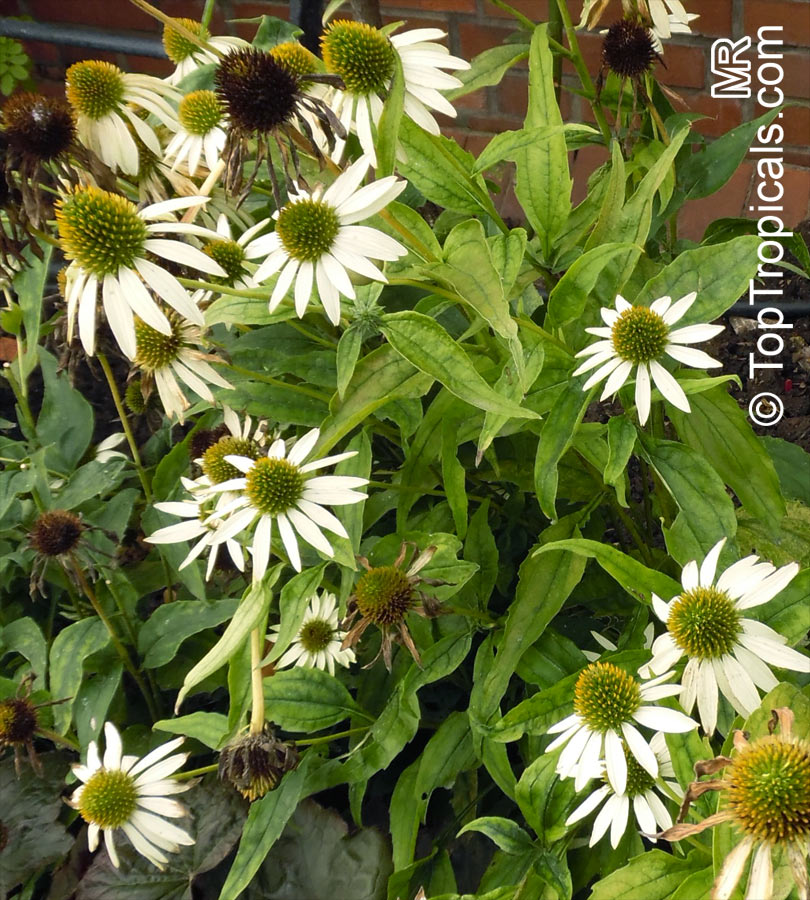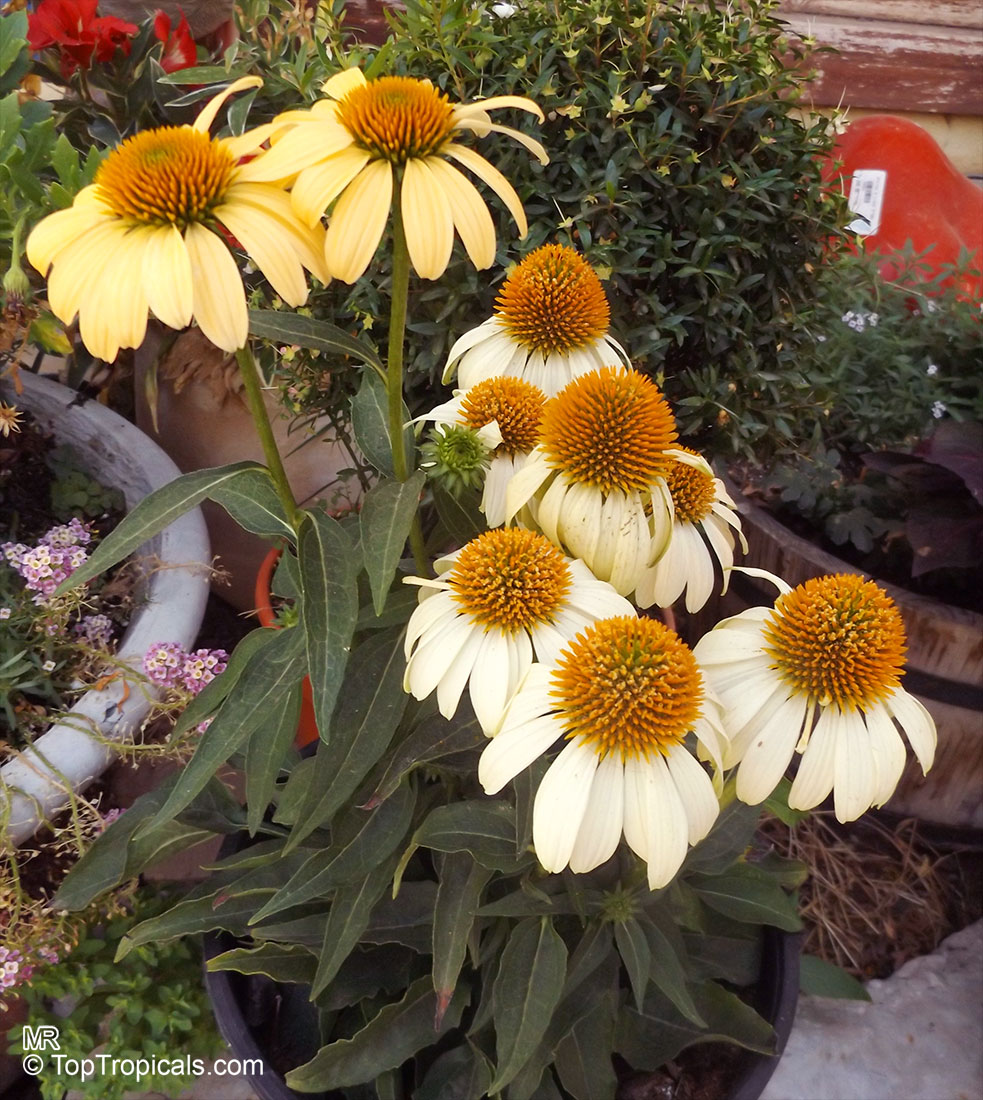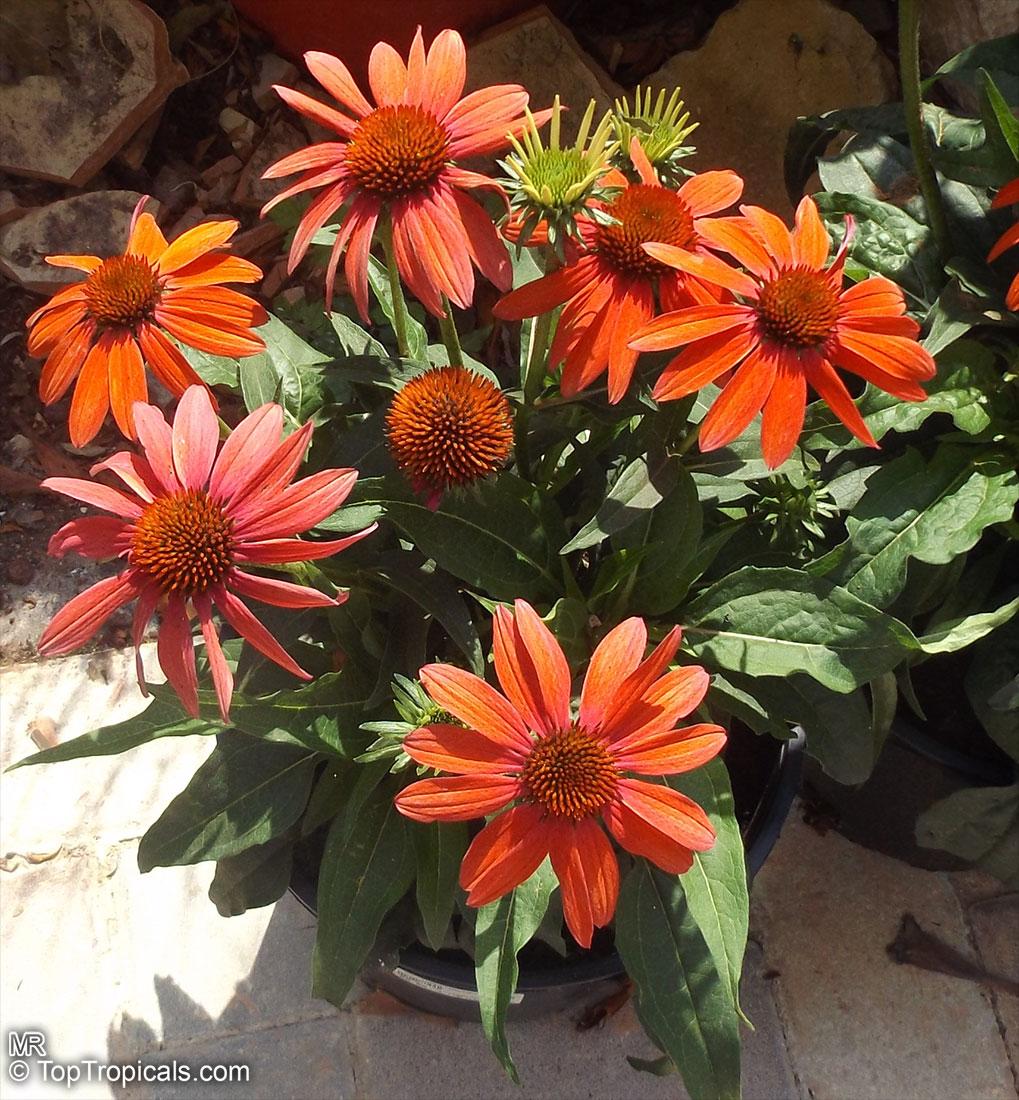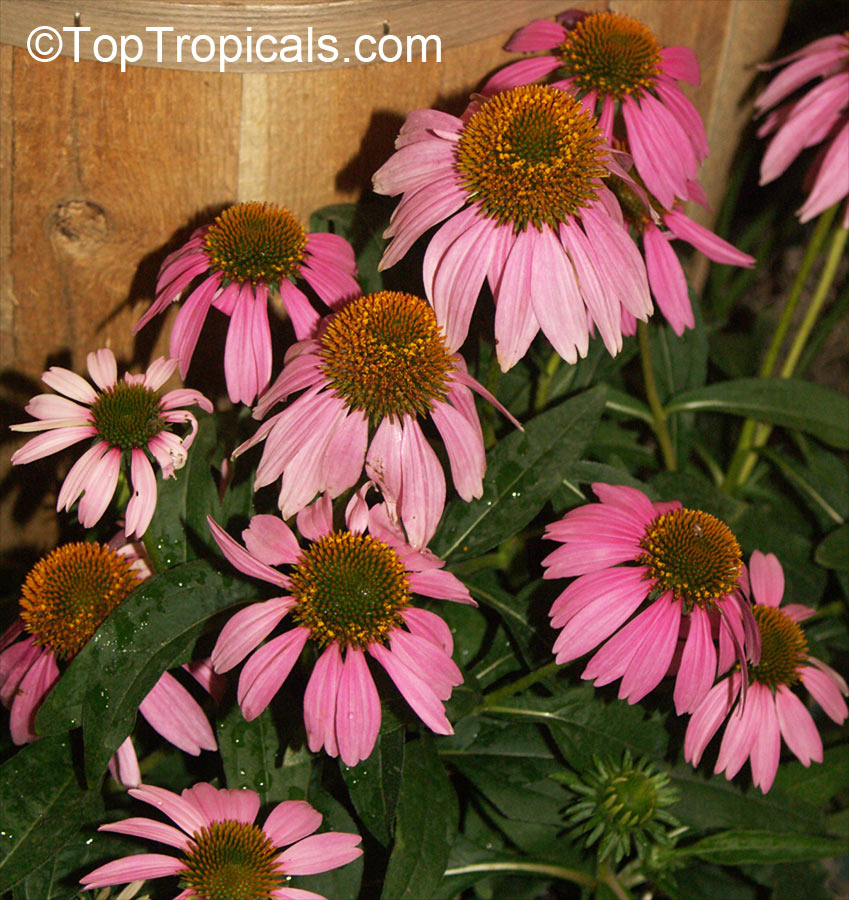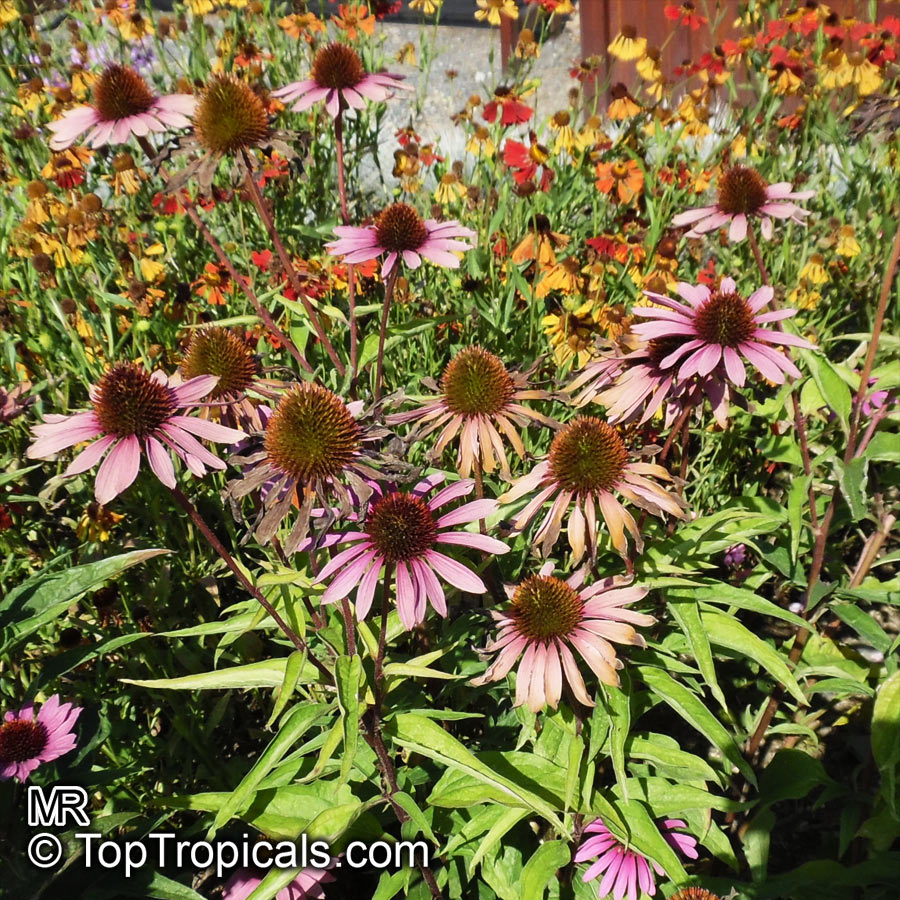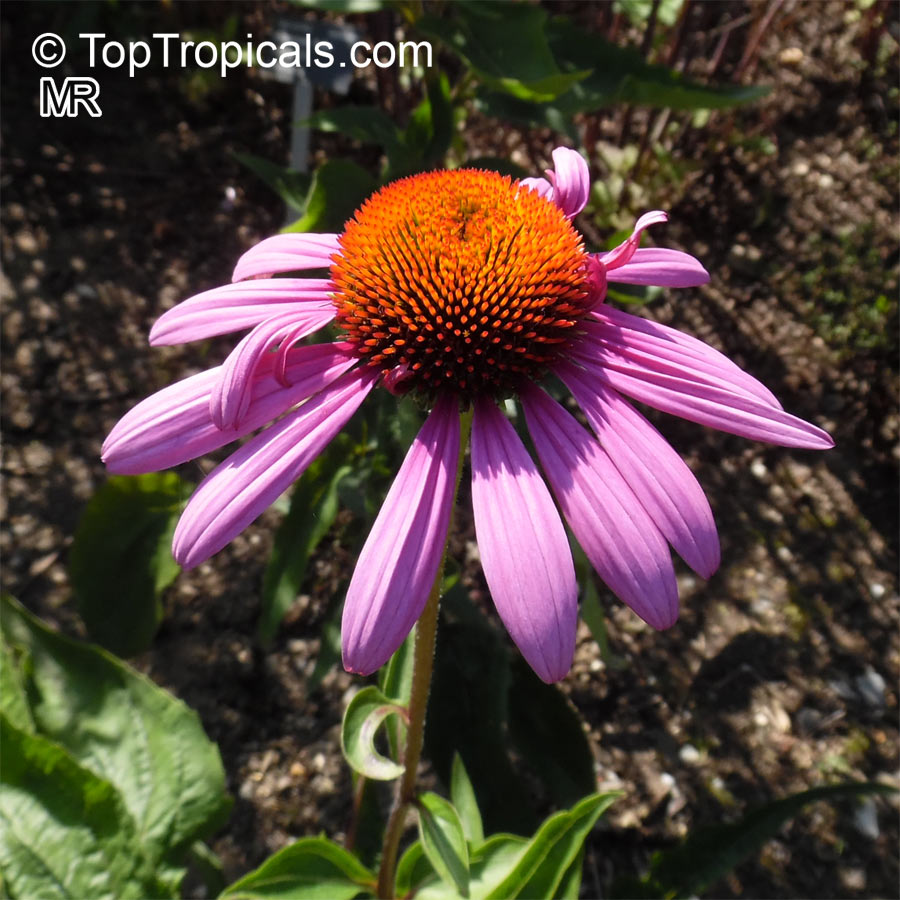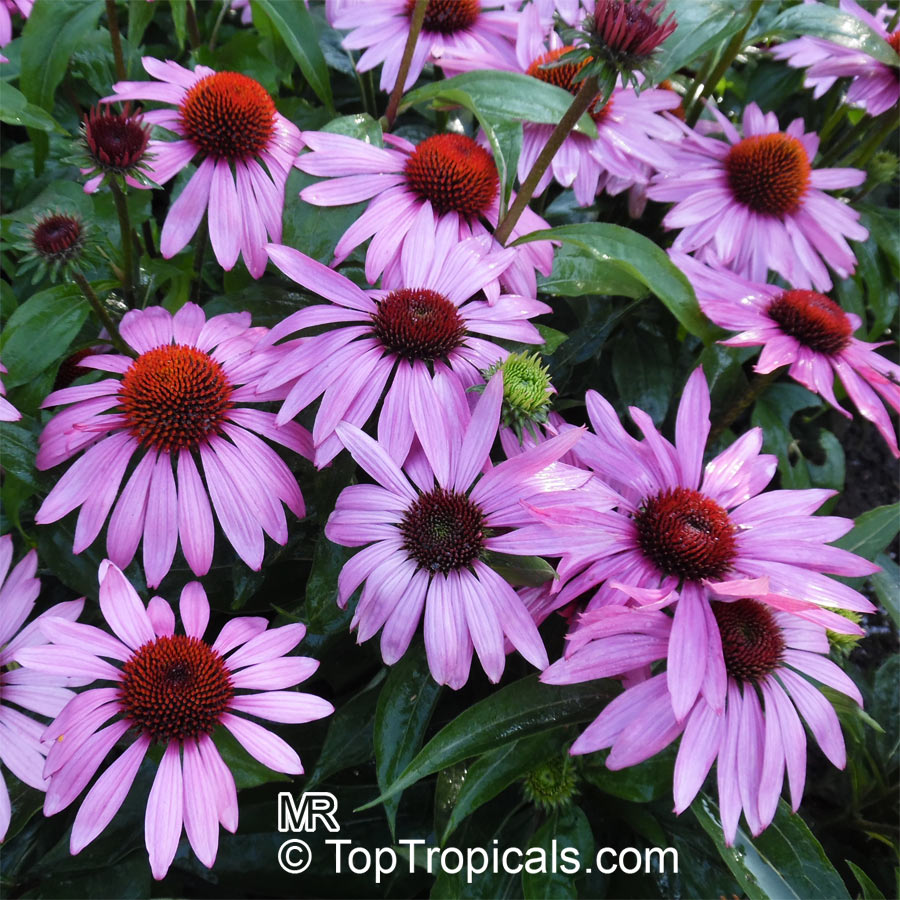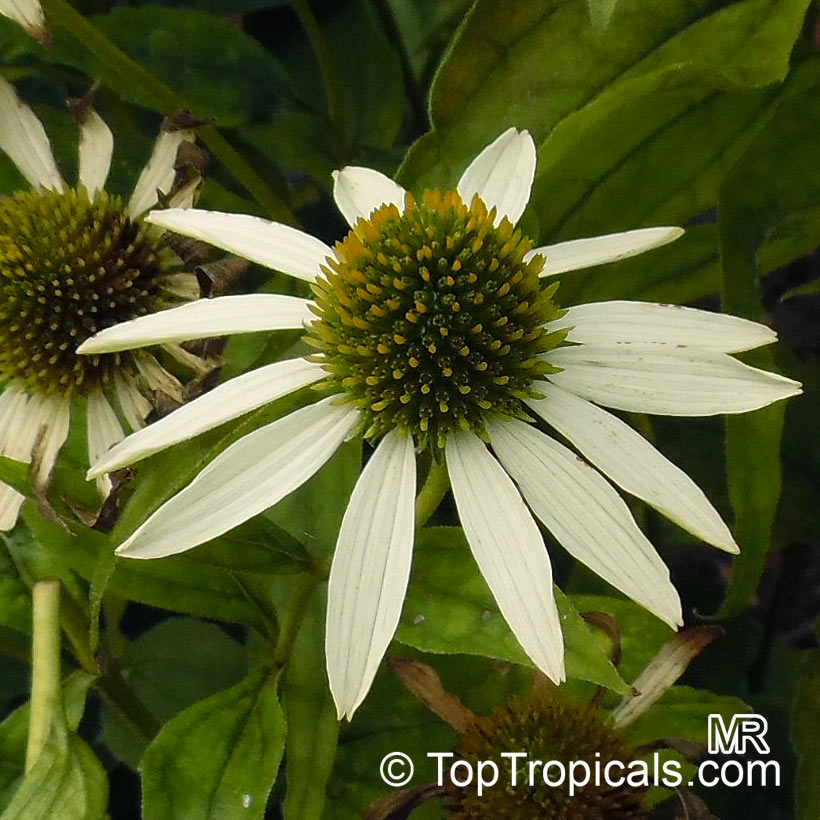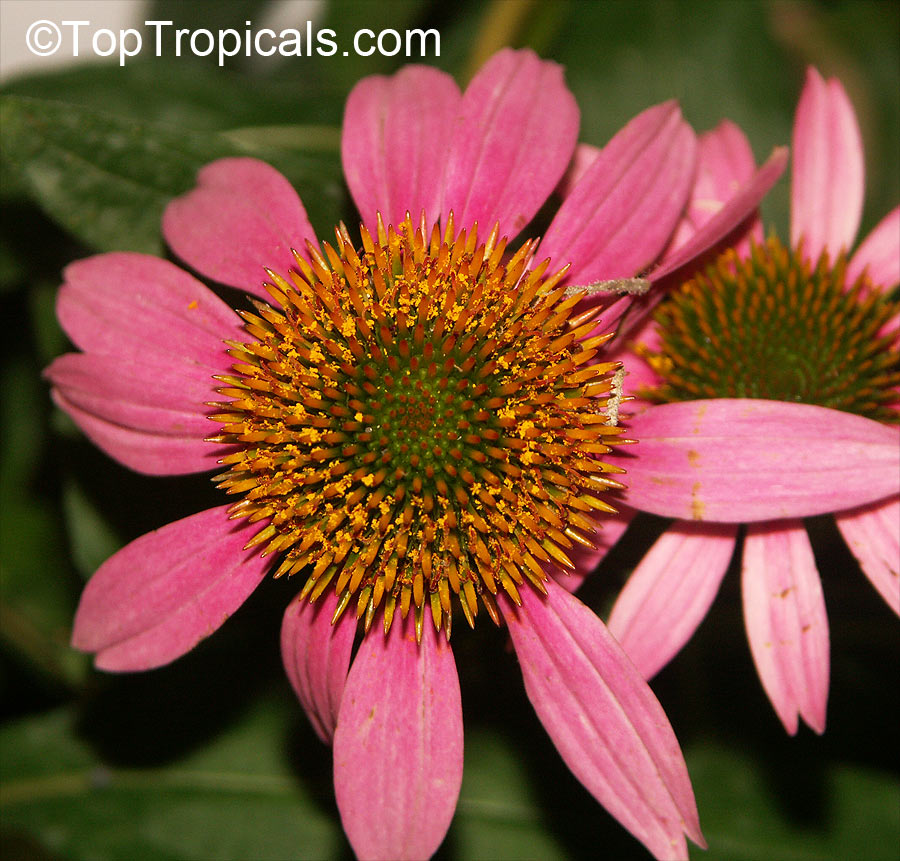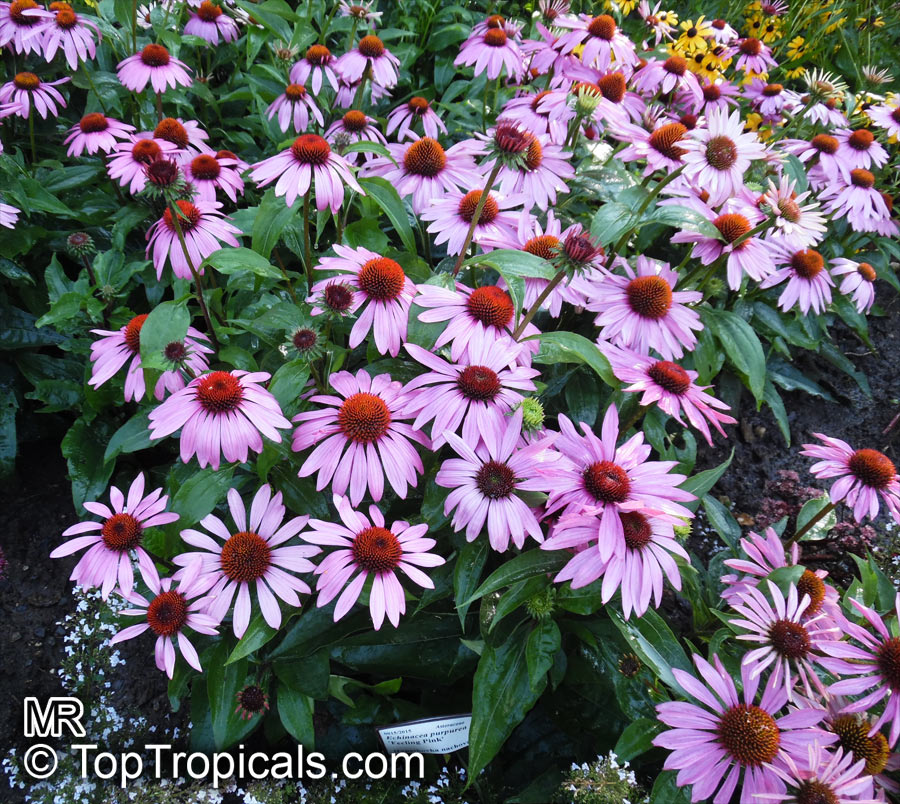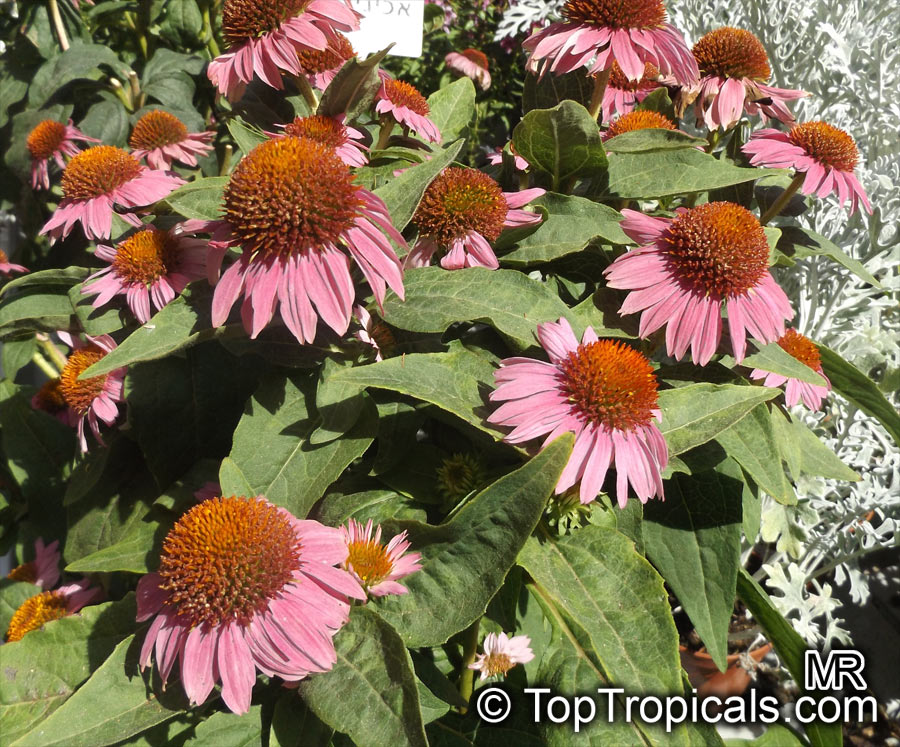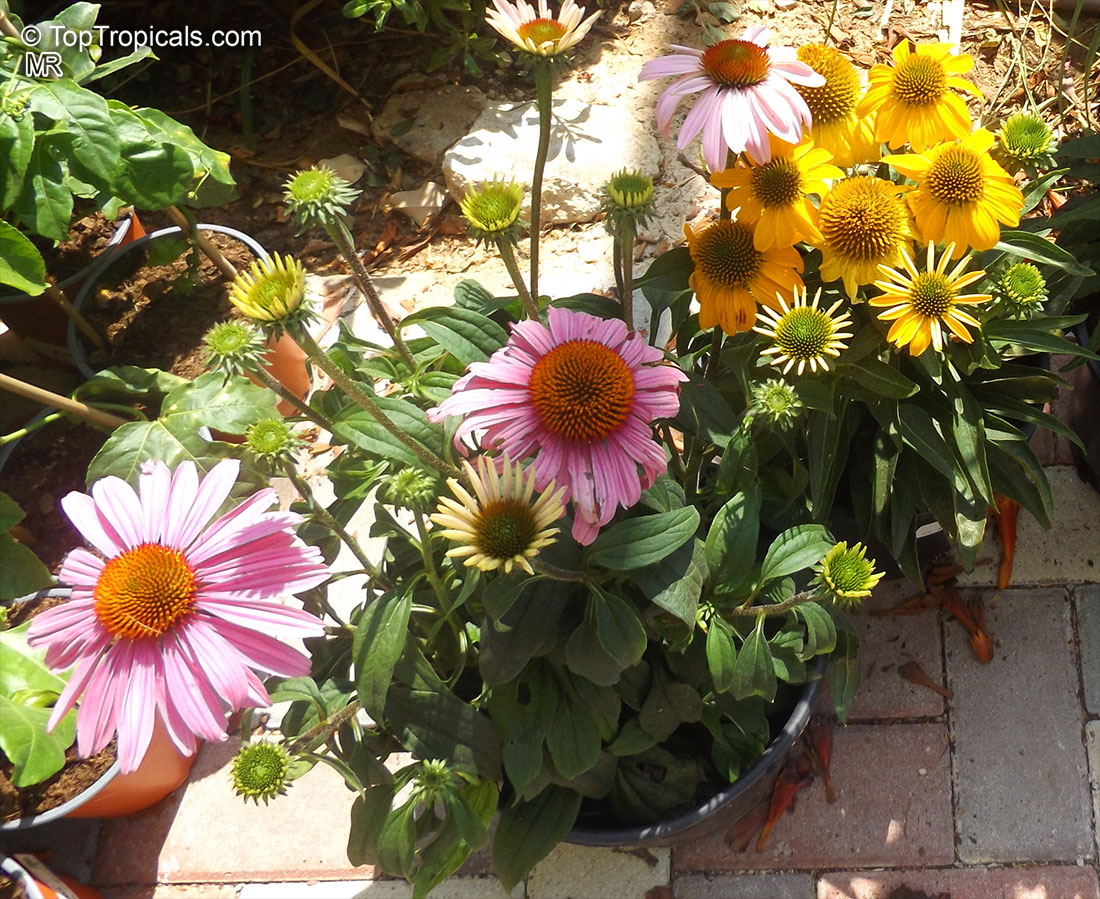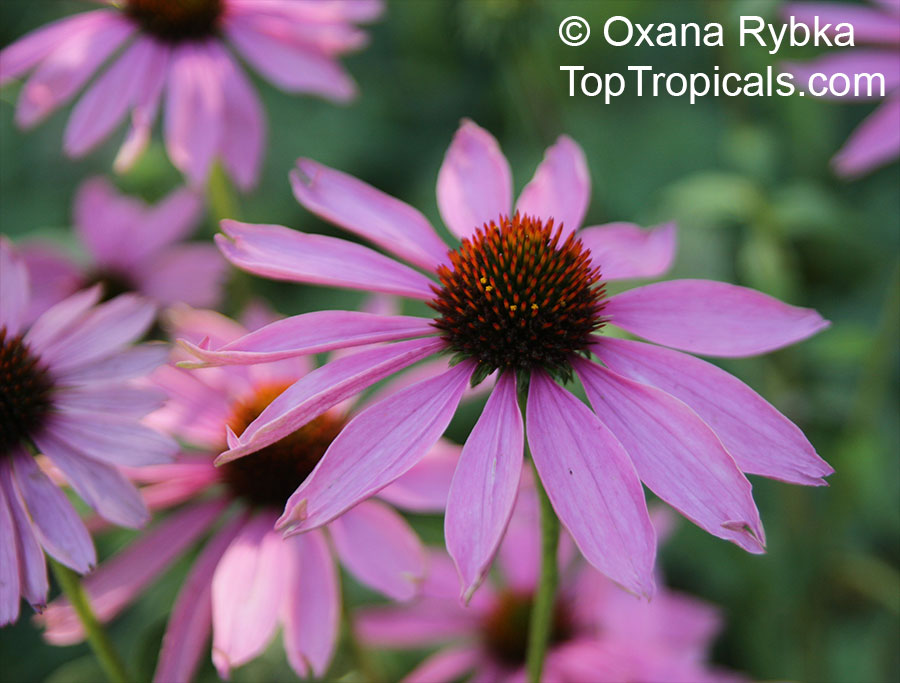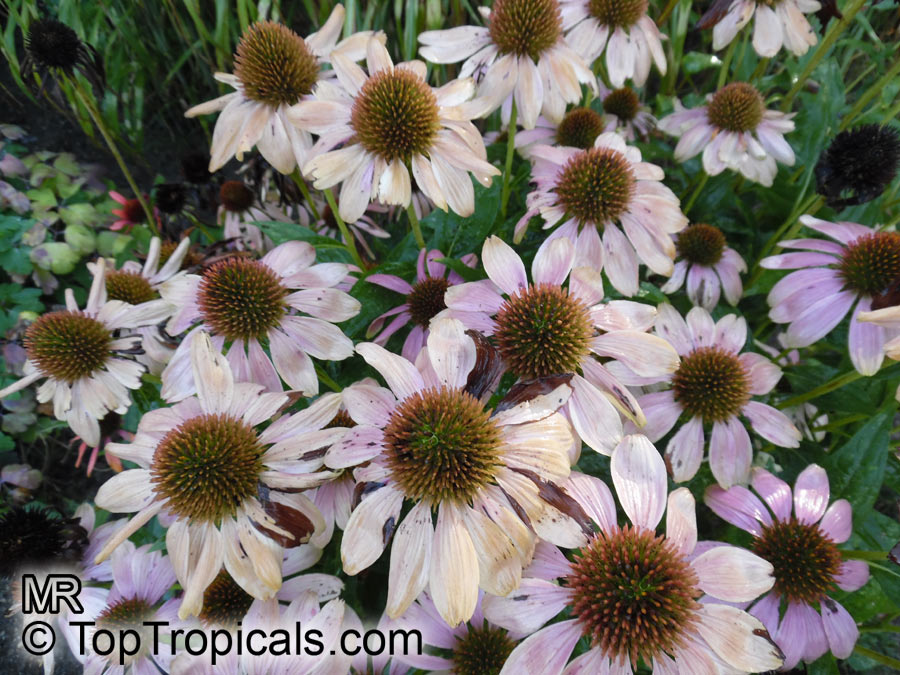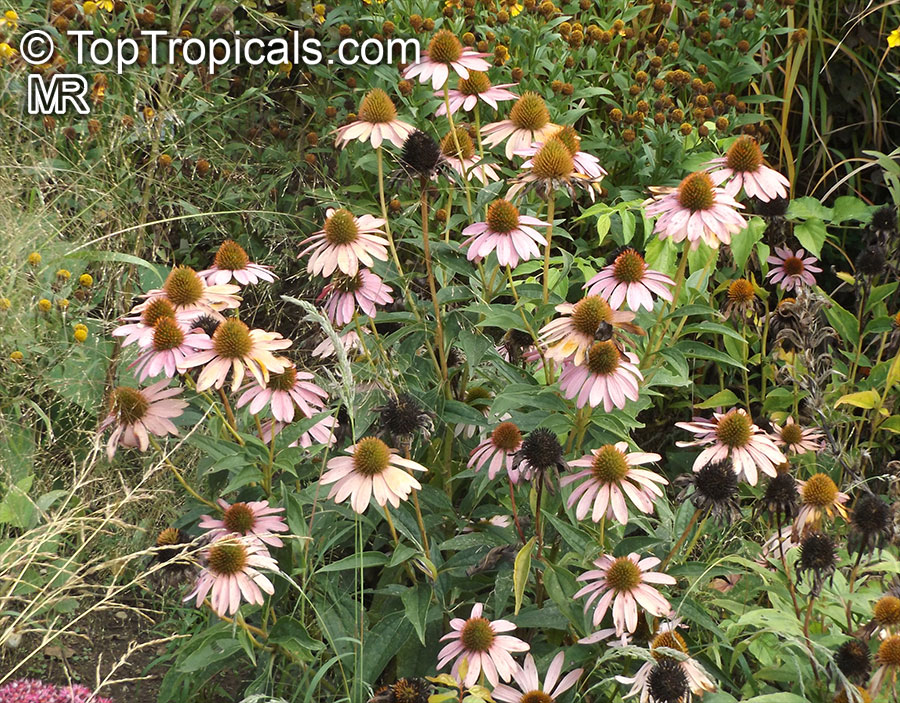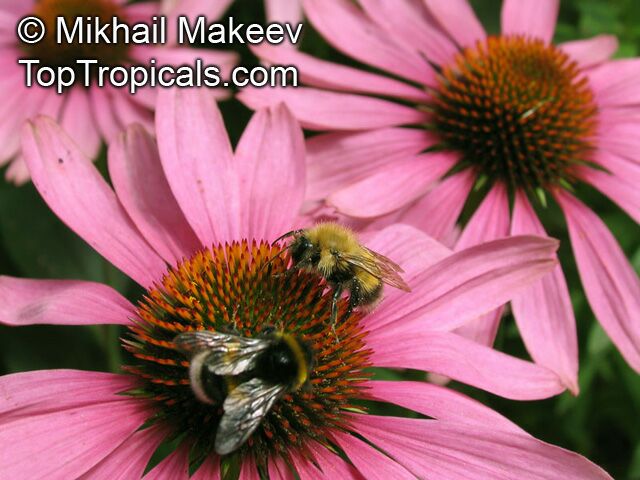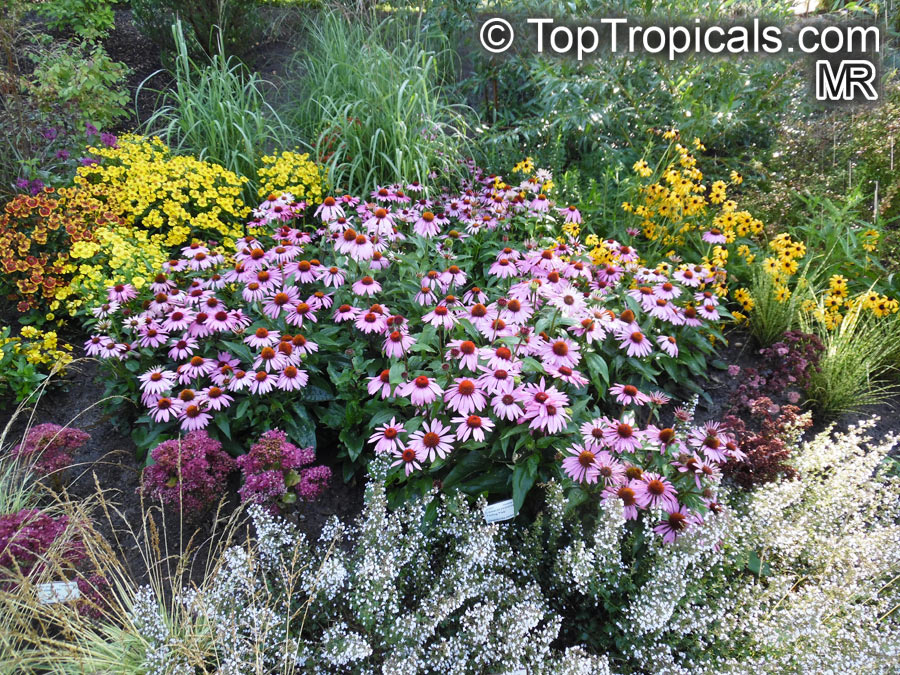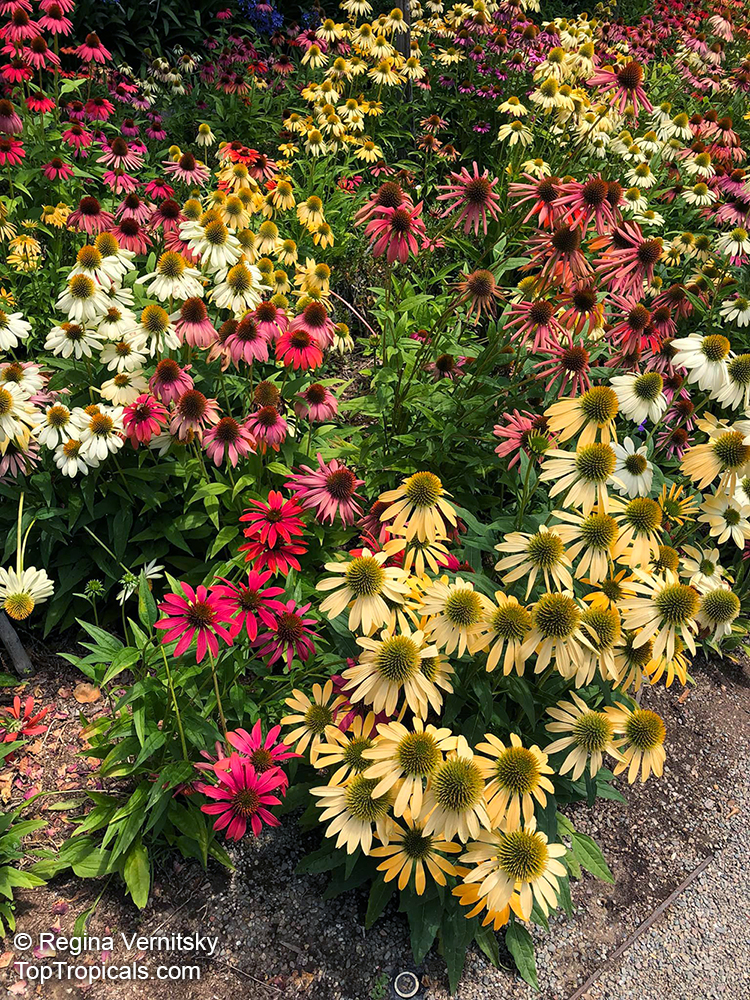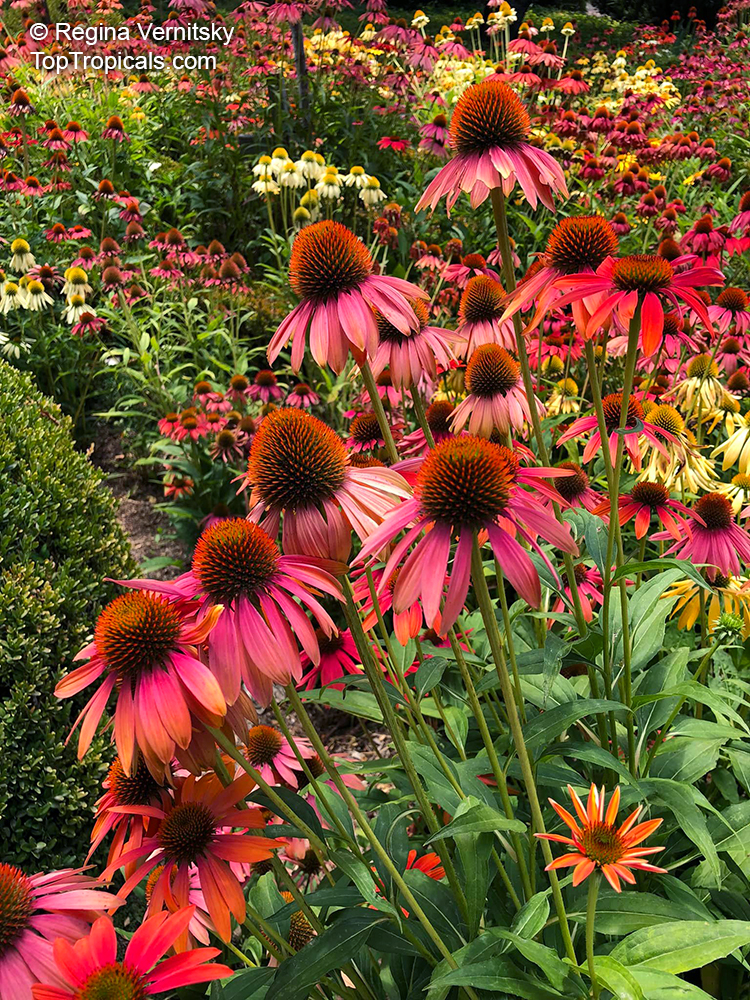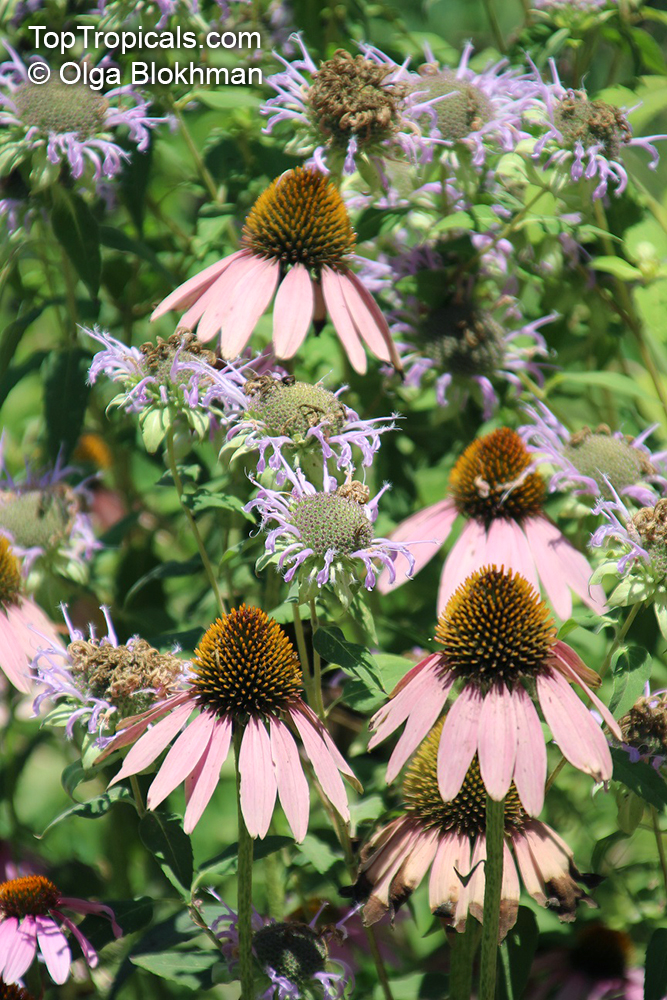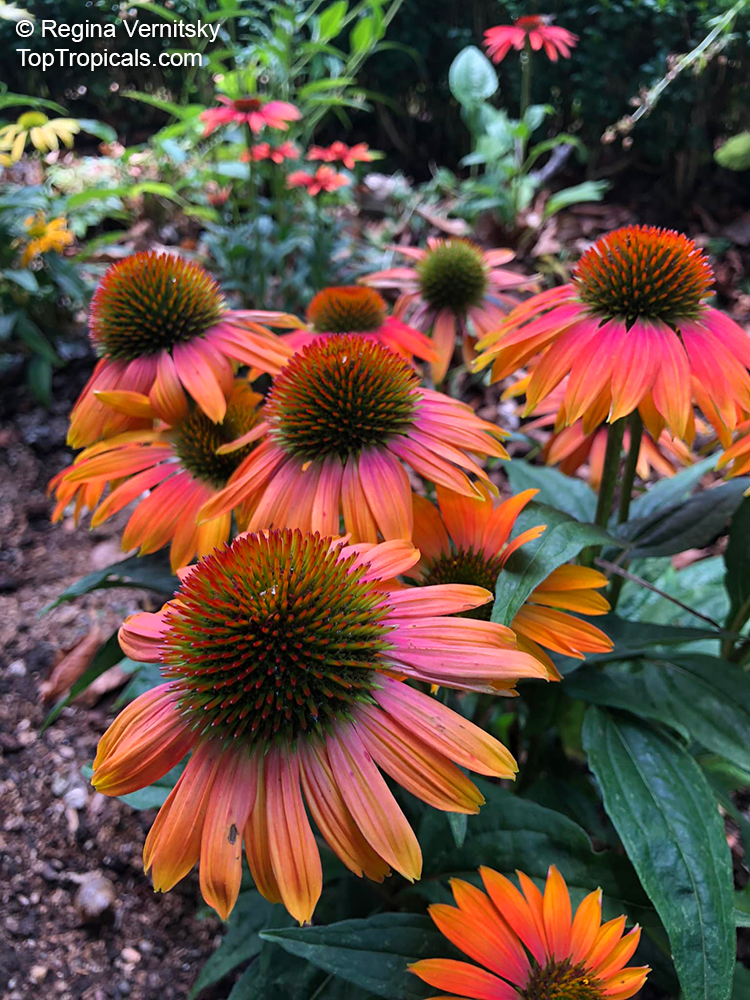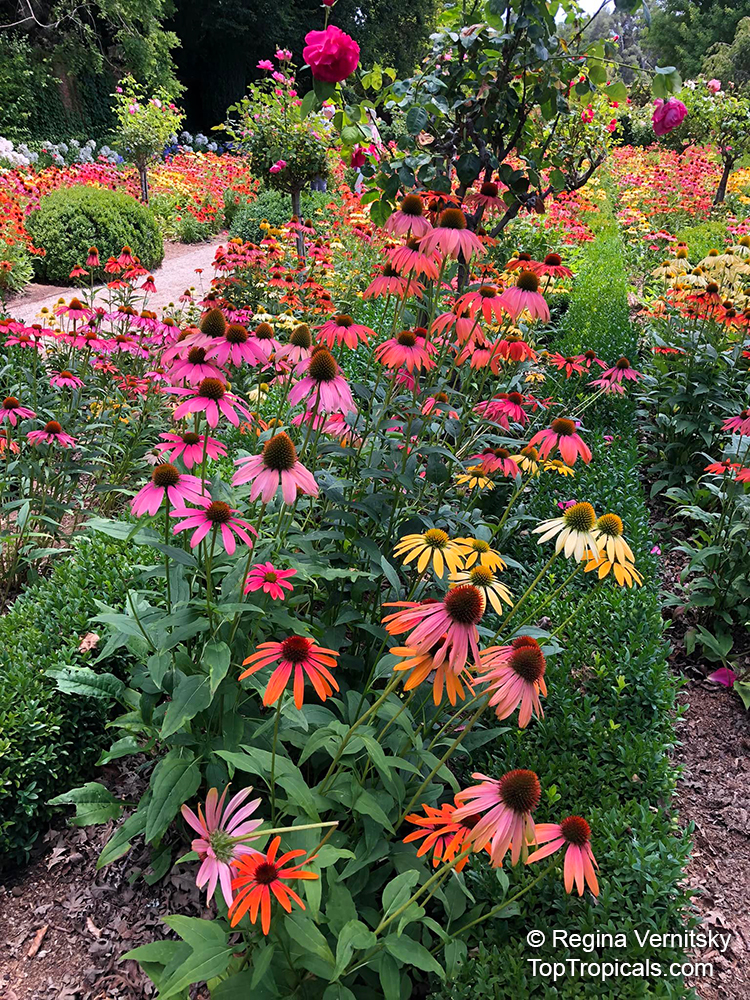Echinacea purpurea (Purple Coneflower)
Top Tropicals Plant Encyclopedia
Botanical names: Echinacea purpurea, Rudbeckia purpurea
Common names: Purple Coneflower, Kim's Knee High
Family: Asteraceae
Origin: North America










Purple Coneflowers produce large, fragrant pink flowers blooms at the beginning of April and May. The 3 to 5 ft flower stalks make them an excellent background planting for your landscape, or in a butterfly garden. They are excellent for cut flowers, lasting a week or longer after being cut. Cutting the flowers will promote an extended blooming season. The perennial plant does best when planted in full sun in any moist, well-drained garden soil, but may also be grown in partial sun. The plant is somewhat drought resistant once established. Coneflowers are hardy in USDA zones 3-9 Propagation is by seed, or by division in spring or fall. Root cuttings taken in the fall may also be successful. Like many perennials, Purple Cone Flowers should be lifted and divided after blooming when the plant's crown becomes to crowded. Usually this occurs in the third or fourth year; this is also when roots can be harvested for medicinal use. Most Purple Cone Flower cultivated for medicinal use is Echinacea purpurea and both the root and the above ground parts are used. Echinacea has been used as an herbal remedy for centuries. Melvin Gilmore writes that the Northern Plains Indians used it "as an antidote for snake bite and other venomous bites and stings and poisonous conditions...It was employed in the smoke treatment for headache in persons and distemper in horses". There are nine known species and it is suspected that all have similar medical properties, but the research is ongoing and no conclusions have yet been determined.
